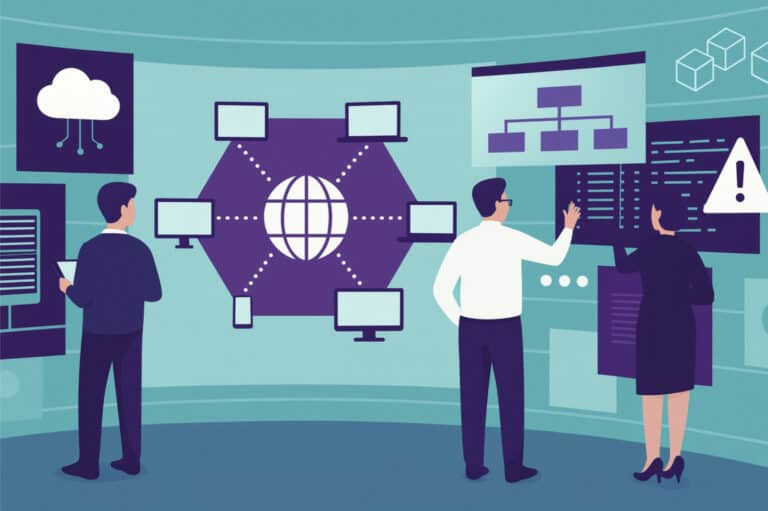Planning in the Age of Disruption
In 2025, global CPG supply chains are navigating the most turbulent waters in over a decade. From tariff shocks to climate-driven commodity swings and intensified retailer expectations, the status quo in planning is being overturned. In 2025, the global supply chain disruptions in 2024 lead to financial losses averaging 8% of annual revenue. Let’s look at what we’re up against:
- Over 76% of shippers in Europe reported disruptions in 2024—stemming from labor strikes, port congestions, and supply shortages. Nearly 25% faced more than 20 distinct disruption events in a year .
- Inventory pulse reports suggest that between 35-45% of CPG brands experienced major stockouts in Q2 2025—driven by demand volatility and fragmented planning.
- Shipping delays have doubled: Lead times for packaging and ingredients have increased by 90% due to port labor strikes and geopolitical fallout from 2025’s tariff hikes. Ocean freight bookings dropped as much as 50% week over week on critical routes, amplifying delays. As of October 2024, the average delivery time for raw materials stood at 81 days, compared to 65 days pre-pandemic, representing a 25% increase.
- Commodity price volatility is wreaking havoc: Droughts and climate events drove up corn prices by 33%and cocoa by 22%, blowing up procurement budgets.
- Retailers are tightening the screws: With real-time sell-through data and tougher OTIF penalties, brands are under pressure to respond faster—or risk delisting.
In this reality, CPG companies cannot afford slow, siloed planning. A disconnected forecast here, a manual supply plan there, and a fulfillment reaction three days later? That’s a recipe for lost sales, ballooning costs, and unhappy retail partners.
Concurrent planning isn’t a “nice to have.” It’s your new edge.
The Silo Problem: Still Planning in Segments?
Fragmented workflows—where demand is forecasted in one silo, supply is planned in another, and fulfillment gets addressed downstream—create blind spots and delay responsiveness. This “sequential planning” approach may have worked in calmer times, but today it breeds inefficiencies:
- Missed coordination between marketing and production
- Slow reaction to demand surges across channels
- Supply delays not reflected in delivery commitments
The fallout? Firefighting escalations, imbalanced inventory, and reactive planning that erodes performance. Planning teams are tied up in endless Excel gymnastics to realign plans that should’ve been connected from the start.
Top-tier companies that embrace supply chain digitization report 20% lower operating costs and 11% higher EBIT. However, there are more benefits to be realized when digitization involves concurrent planning.
The Concurrent Solution: Plan as One
Concurrent planning is a transformative approach that unifies demand, supply, inventory, and fulfillment decisions—in one connected digital thread. It enables your teams to:
- React to real-world signals in real time
- Simulate trade-offs across functions and scenarios
- Collaborate across silos with shared data and KPIs
- Execute faster with fewer surprises
Think of it like moving from a group of solo musicians to a well-synced orchestra—with one sheet of music, one conductor, and no delays between notes.
Concurrent Fulfillment + Transportation: From Promises to Performance
One of the most impactful applications of concurrent planning in CPG is in fulfillment and transportation—two functions that often operate in parallel, but rarely in sync.
In a fragmented approach, supply plans are finalized without real visibility into logistics constraints. Transportation teams then scramble to stitch together feasible delivery routes—leading to suboptimal truckloads, late deliveries, and excess emissions.
With concurrent fulfillment and transportation planning, companies can optimize:
- What to ship
- From where
- By when
- In the most efficient and sustainable way
By integrating real-time demand signals, inventory availability, warehouse throughput, truck capacity, and carrier constraints into one connected planning model, leading CPG companies achieve:
- +12–18% increase in OTIF (On-Time-In-Full) rates
- +20% improvement in truck utilization—fewer half-empty shipments and costly last-minute LTLs
- 10–15% reduction in CO₂ emissions per order, by consolidating shipments and optimizing routes
What-if simulations allow planners to compare fulfillment scenarios instantly:
“Should I ship from DC A or DC B?”
“What happens to delivery times and emissions if we expedite vs. reallocate?”
This kind of agile orchestration across fulfillment and logistics is a game-changer—especially when retail partners are tracking OTIF like never before and carbon reporting is becoming mandatory.
From Firefighting to Foresight
What sets future-ready supply chains apart isn’t just automation—it’s alignment. Automation alone isn’t enough. The game-changer is strategic alignment—embedding real-time insights and cross-functional orchestration throughout all planning layers.
By embedding intelligence and collaboration across planning layers, CPG leaders can shift from reactive mode to proactive agility. Instead of chasing changes, you anticipate them. Instead of silos, you get synergy.
Are You Ready to Break the Silos?
If you’re leading a CPG transformation and struggling with disconnected planning, it’s time to ask:
- Are your planning processes optimized—or just surviving?
- Can your systems simulate “what-if” scenarios—or are you still stuck in “too late” mode?
- Do your demand, supply, and fulfillment teams speak the same language—or chase separate KPIs?
With concurrent planning, you don’t have to choose between speed and accuracy, or agility and alignment. You can have all of it—on one platform.









